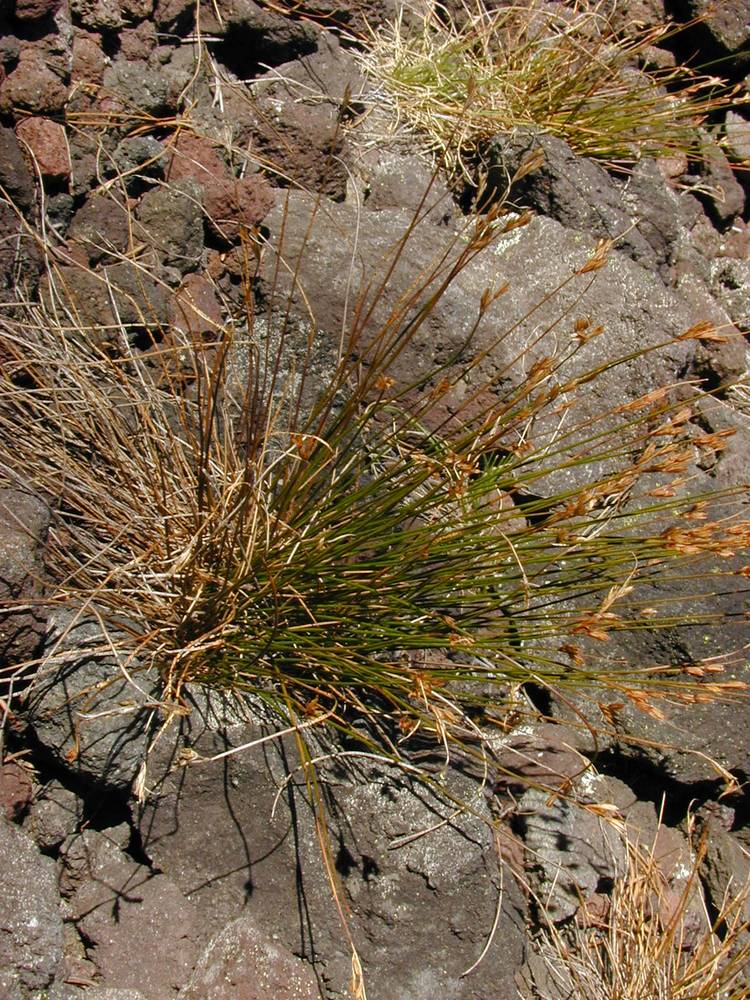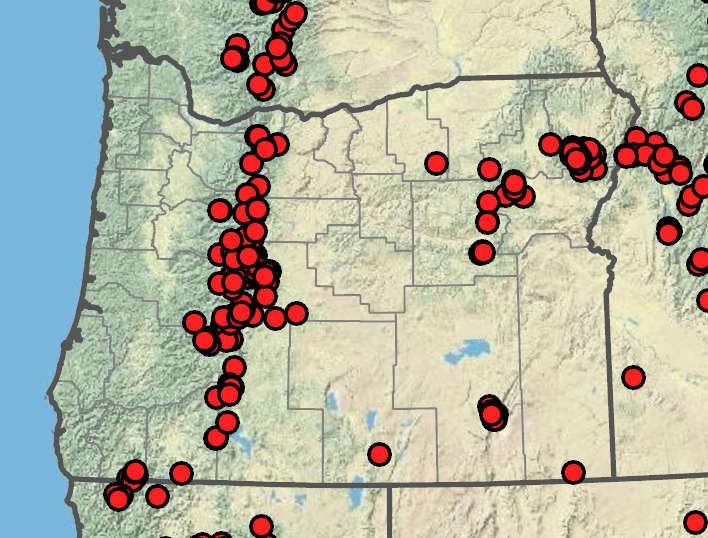Juncus parryi
Parry's rush
with some terete; stem-like blades;
distal sheaths 1–5 cm, light brown or redbrown.
a loose cluster of 1–3 flowers;
inflorescence bracts erect and stem-like, often longer than inflorescence.
tepals 6, brown to dark brown;
stamens 6;
filaments 0.6–1 mm;
anthers 1–1.6 mm;
styles 0.3–0.6 mm.
6–9 mm; longer than or equaling the tepals, brown;
apices acute to acuminate, 3-chambered.
(1.1)1.7–2.7 × 0.2–0.3 mm;
bodies 0.6– 0.9 mm, striate; tails prominent; (0.3)0.4–0.9 mm.
Juncus parryi
Rocky slopes, scree, pumice, dry meadows, shores, ridgelines, open conifer forest, peatlands. 1100–2800m. BR, BW, ECas, Sisk, Casc. CA, NV, ID, WA; northeast to Alberta, southeast to NM. Native.
This species is often confused with J. drummondii, which lacks leaf blades and sometimes is in slightly damper habitats.
Peter Zika
- Local floras:
BC,
CA,
OR,
WA
- Local Web sites:
CalFlora,
CalPhotos,
Flora NW,
PNW Herbaria
WildflowerSearch
iNaturalist (observations)
USDA Plants Database
- LBJ Wildflower Center
- SEINet
- Plants of the World Online
- Encyclopedia of Life
- Wikipedia
- Google Image Search

